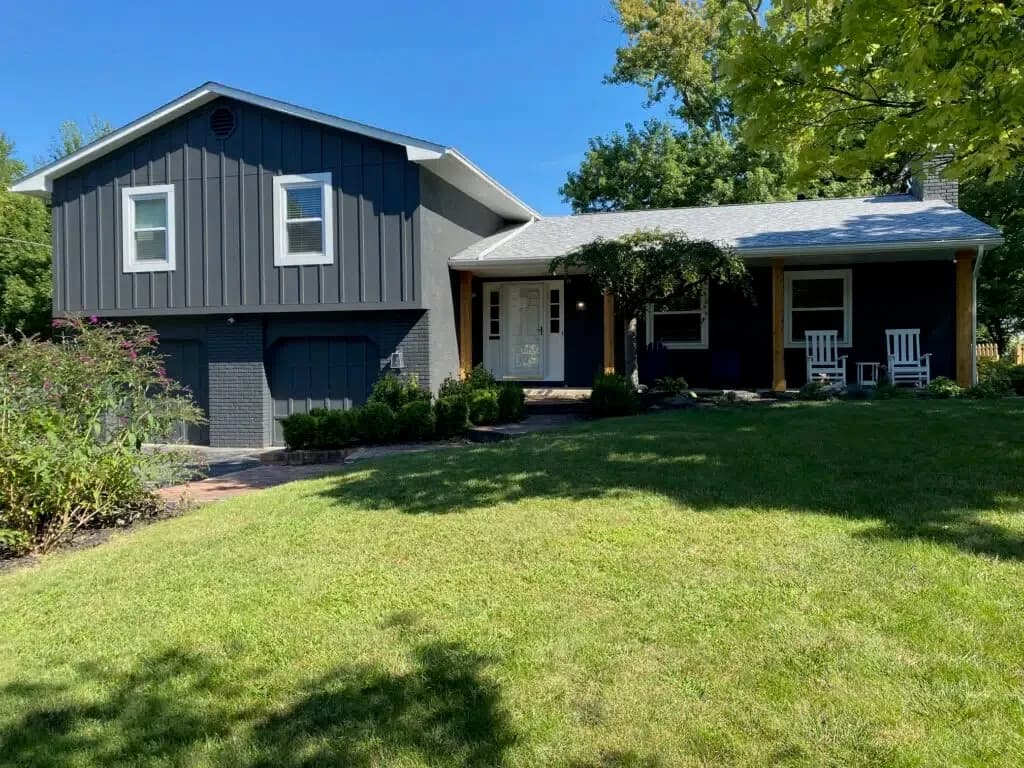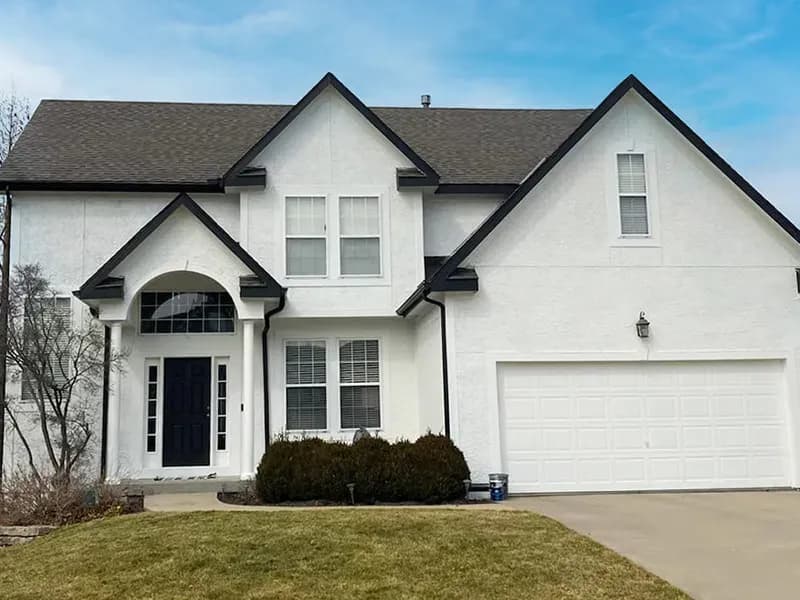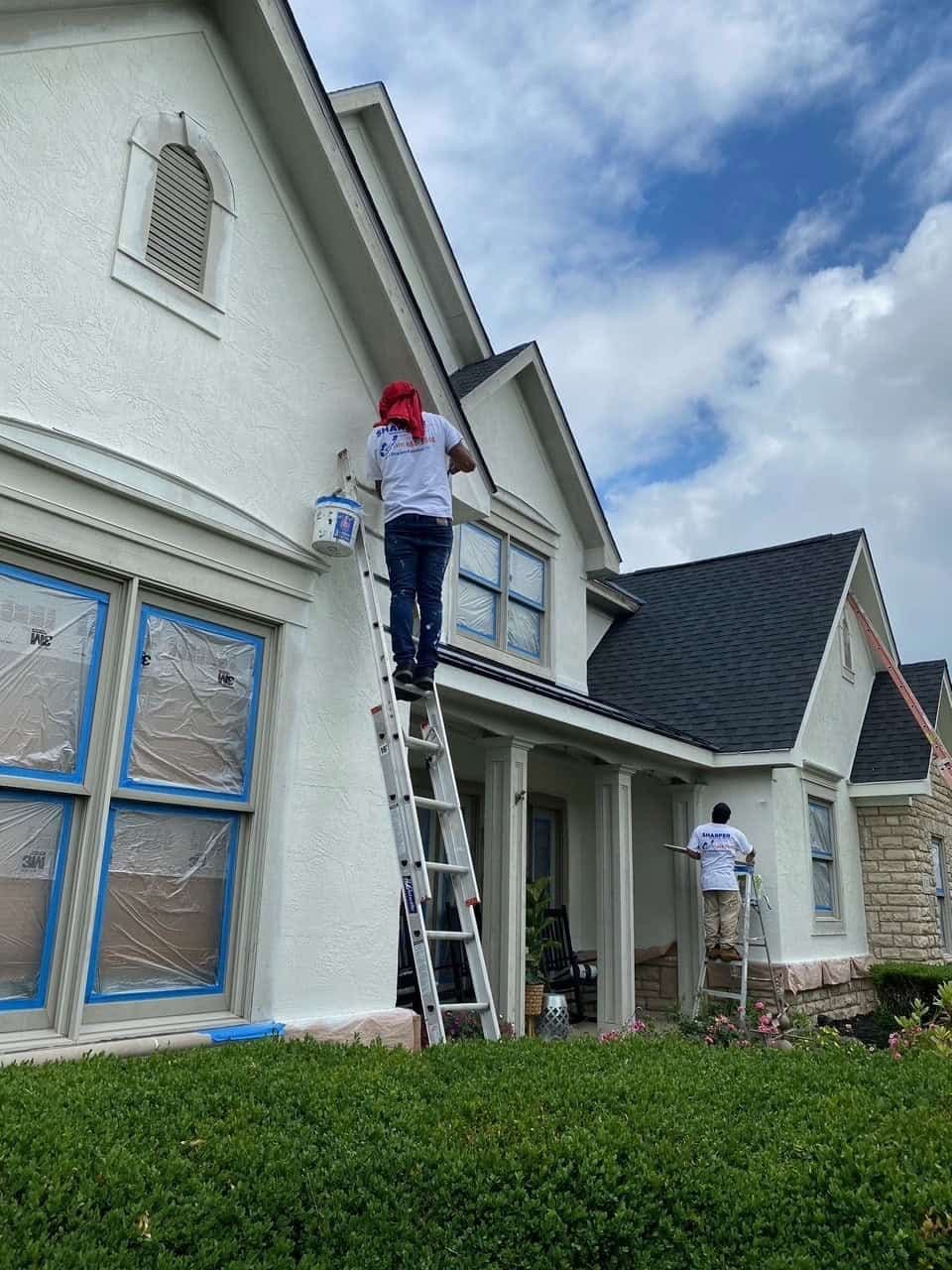Painting Resources for the Greater Orlando, FL Region
Hidden Risks of Skipping Mold Removal Before Repainting
Schedule Your Quote Today!
25% Off
Ends 10/31
By submitting this form, you consent to receive SMS messages and/or emails from our company. To unsubscribe, follow the instructions provided in our communications. Msg & data rates may apply for SMS. Your information is secure and will not be sold to third parties.
This is one of the most common painting shortcuts homeowners take—and one of the most damaging.
Painting over mold may seem like a harmless way to speed up the process or save a few bucks on remediation. But the reality is, this decision often backfires, leading to compromised air quality, health problems, damaged walls, and a paint job that fails in half the time it should.
This post breaks down the real reasons why people skip mold removal, what happens when they do, how to recognize it before you paint, and how to properly treat it. If you want your paint job to last—and your home to stay safe—read on.
Why Mold Removal Is Skipped in the First Place

Misunderstanding Mold
A big part of the problem is that homeowners often don’t recognize what they’re looking at. Mold isn’t always black and dramatic. Sometimes it’s subtle—grayish-green patches, streaky specks, or even a chalky residue that gets mistaken for dirt or dust.
There’s also a common belief that paint acts like a sealant. If you just cover it up, the problem is gone, right? Unfortunately, it doesn’t work that way. It keeps growing underneath.
Rushed Projects and Tight Deadlines
Whether you’re selling your house, remodeling, or just trying to wrap up a long-overdue project, there’s a lot of pressure to get things done quickly. It’s not unusual for homeowners to say, “The painters are already scheduled—we don’t have time for this.” And when it shows up at the eleventh hour, it’s easy to make a judgment call and just move forward.
The irony is, rushing this step often leads to more time, money, and stress later on.
DIY Fixes and Budget Constraints
Plenty of people take pride in doing home projects themselves. And that’s great—until it isn’t. Without experience in identifying or treating mold, it’s easy to overlook early warning signs or rely on surface-level fixes that don’t get to the root of the issue. On a tight budget, it’s tempting to skip what feels like an extra step.
But it isn’t cosmetic. It’s a living organism, and painting over it won’t stop it from spreading.
Overconfidence in Mold-Resistant Paints
Many assume that mold-resistant paint will solve the problem. It’s even in the name, right? But what’s often misunderstood is that these products are preventative, not corrective. They’re designed to stop it from forming on clean surfaces, not to kill it that’s already present.
So if you apply mold-resistant paint over active mold, all you’ve really done is give it a darker, glossier hiding place.
What Happens When You Paint Over Mold?
Let’s talk about what actually happens beneath that fresh coat of paint if it hasn’t been dealt with.
First, it doesn’t die when painted over. Paint does not contain any biocide properties unless it’s specifically formulated to do so—and even then, it only works on clean surfaces. Instead of stopping the mold, you’re trapping it in. The conditions behind the wall—moisture, warmth, organic material—remain the same, and it continues to spread invisibly.

This sets off a chain of problems that affect both your health and your home.
1. Health Issues: Spores can still become airborne even when hidden. If your HVAC system kicks in or the walls are disturbed, the spores can circulate throughout your home. Common symptoms include sneezing, persistent coughing, irritated eyes, skin rashes, fatigue, and asthma attacks. Children, older adults, and people with respiratory conditions are especially at risk.
2. Paint Failure: A painted-over spot might look fine at first. But give it a few weeks—or sometimes just days—and you’ll notice bubbling, cracking, or peeling. It holds onto moisture, and moisture under paint is a recipe for failure. Ugly stains will return. Paint adhesion weakens. In short: you’ll need to repaint much sooner than expected.
3. Structural Deterioration: It isn’t picky. Over time, it can weaken drywall, wood trim, soffits, and even siding. And if you’ve already painted over it, detecting the damage early becomes harder, giving it more time to spread undetected.
The Hidden Financial Costs of Skipping Mold Removal
Let’s break down where the real costs come in:
Problem | Hidden Cost |
Paint failure | Repainting, touch-ups, new primer—double the labor cost |
Mold spread behind walls | Structural damage—can run into the thousands |
Reduced home value | Buyer skepticism, mandatory repairs, failed inspections |
Insurance coverage denied | Mold caused by negligence often not covered by homeowners’ insurance |
Health problems | Medical bills, missed work, indoor air quality upgrades |
Skipping mold removal might save you a few hundred bucks in the moment—but it can easily lead to thousands in repairs, medical costs, and lost resale value later.
How to Identify Mold Before Painting
So how do you know if that weird patch is mold and not just dirt or age?
Here are three common signs to look for:
Discoloration that looks gray, green, or black, especially near windows, plumbing, or on ceilings.
Peeling paint with dark staining beneath—this often signals moisture, a mold magnet.
A musty odor, like wet cardboard or old basement air, even if there’s nothing visible yet.
It loves dark, damp environments—places where sunlight can’t dry things out and air doesn’t circulate well. Think behind furniture, in basements, around bathroom walls, under sinks, or along shaded exterior siding.
If you’re not sure whether it’s mold or something else, you can use a moisture meter or call in a professional for an inspection. In some cases, what looks like a tiny patch on the wall might be the visible tip of a much larger issue.
The Right Way to Remove Mold Before Repainting
Here’s the only step-by-step list you really need:
Proper Mold Removal Before Painting
- Identify the source of moisture. Fix leaks or poor ventilation.
- Protect yourself with gloves, a mask, and eye protection.
- Clean the area using an EPA-registered cleaner. (Bleach alone isn’t enough.)
- Scrub thoroughly with a soft-bristle brush.
- Rinse and dry the surface completely—24 to 48 hours minimum.
- Repair any damage—replace drywall, trim, or wood that’s been compromised.
- Prime with a mold-resistant primer.
- Paint only when the surface is completely dry and clean.
Rushing this process is what causes paint to fail and mold to return. Taking the time to do it right ensures your paint lasts—and keeps your home healthier.
Why Mold-Resistant Paint Alone Is Not Enough
Let’s clear this up once and for all: mold-resistant paint is a helpful tool, not a solution.
These paints contain antimicrobial agents that make it harder for it to take hold in clean, dry, prepped areas. Think of them like wearing sunscreen—you still need to be smart about how long you’re in the sun.
What they don’t do is:
Kill existing mold
Stop growth behind drywall or siding
Fix poor ventilation or leaking pipes
If you skip cleanup and go straight to painting, mold-resistant paint won’t save you. It will simply look good for a little while before the same problems resurface.
When to Call a Professional: It’s Not Just About the Paint

If it keeps coming back even after you clean it—or if the smell doesn’t go away—it’s time to bring in a professional. And especially if you’re preparing to sell your home, you’ll want the assurance that the issue is fully resolved.
Professionals can do more than just remove it—they use HEPA vacuums, contain airborne spores, repair damage, and prep surfaces correctly for repainting. They’ll also conduct moisture testing and sometimes even air quality assessments to make sure the environment is safe and the problem won’t return.
Yes, it costs more upfront. But if you value your family’s health, your home’s structure, and a paint job that lasts, it’s worth every penny. Many pros even offer warranties, giving you peace of mind long after the paint has dried.
Frequently Asked Questions
Can I just bleach the mold before painting?
Bleach may lighten the stain, but it doesn’t kill spores in porous surfaces like wood or drywall. It’s not enough on its own.
What if the mold looks small?
Even small mold spots can indicate a bigger hidden problem. Better to investigate and be sure.
I already painted over mold—what should I do now?
Watch for peeling, bubbling, or musty odors. If they appear, remove the paint, clean the area properly, and repaint after treatment.
Can mold really ruin the paint job that fast?
Yes—especially in humid environments. Some people notice bubbling within a few weeks.
Don’t Let Mold Sabotage Your Paint Job—or Your Health
Skipping mold removal before repainting might seem like a time-saver, but it often creates more problems than it solves. It isn’t just unsightly—it’s a sign of deeper moisture issues that can impact your health, your home’s structure, and your wallet.
Take the time to inspect, clean, and treat your walls before you break out the paintbrush.
Because when it comes to mold and painting:
“A paint job is only as strong as the surface underneath.”
If you’re not sure whether what you’re seeing is mold—or how to handle it safely—reach out to our qualified pros. A few hours of prevention can save you years of repairs and regrets.
April 15, 2025
About the Author: Joseph Steele
Hi, I’m Joseph Steele, with Sharper Impressions Painting. We proudly offer high-quality interior and exterior painting services for homes and businesses in Atlanta, Columbus, Orlando, Indianapolis, Kansas City, and Nashville. From cabinet painting to deck and fence staining, we’re here to enhance your space. Learn more about us here.
See what others have to say
Above All, Our Customers Come First…
Sharper Impressions Painting is a painting contractor with over 32 years of residential painting experience along with an impressive reference list from satisfied customers. Your home is your most valuable asset and our respectful painting team will make it look great and keep it protected for a long time.
Our Locations

